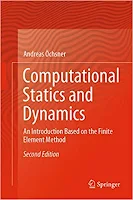 |
| Bentley ADINA Ultimate |
Bentley ADINA Ultimate 2023 CONNECT Edition version 23.00.00.306 [Size: 781 MB] ... The premier finite element program for nonlinear analysis, ADINA software is used to solve the most difficult nonlinear problems involving geometric, material, and load nonlinearities; large deformations; and contact conditions.
What Is ADINA Ultimate?: ADINA Ultimate includes everything in ADINA Advanced, plus ADINA CFD, ADINA FSI, ADINA EM, ADINA Multiphysics, and the ADINA User Interface. Choose this software suite to solve your most challenging nonlinear problems involving: Geometric, material, and load nonlinearities + Large deformations + Contact conditions + Heat transfer + Thermo-mechanical coupling + Computational fluid dynamics + Fluid structure interaction + Electromagnetics + Multiphysics.
Create Computational Fluid Dynamic Simulations/ADINA CFD: Model incompressible and compressible flows in a wide array of fluid flows including laminar and turbulent regimes, thin-film Reynolds flow, two-phase flow, non-isothermal flow, conjugate heat transfer, and more. Benefit from material models for handling non-Newtonian fluids and real gasses. Solve general flow conditions in arbitrary geometries.
Multiphysics Solution for Complex Fluid-structure Interaction (FSI) Analyses/ADINA FSI: Use direct FSI coupling or iterative FSI coupling methods to solve the coupling effects of fluids and structures. Satisfy the conditions of displacement compatibility and traction equilibrium. FSI analysis can be performed with incompressible, slightly compressible, low-speed compressible, and high-speed compressible flow. It is ideal for large deformations of soft structures, or highly compressible flows abutting stiff structures. All available element types can be used, including shell, 2D and 3D solid, beam, iso-beam, and contact surfaces, as well as all available material models.
Solution Capabilities for Electromagnetic Analysis/ADINA Electromagnetics: Electromagnetic effects can be coupled to mechanical or fluid flow systems. Solve for general Maxwell’s equations with different loading and boundary conditions, electrostatic and magnetostatic fields, AC/DC conduction, time-harmonic, eddy current, EM fields with Lorentz forces, EM fields coupled with temperature, and wave guide.
Unique Breadth and Depth Multiphysics Capabilities/ADINA Multiphysics: Gain deeper insight into the performance of your designs to better understand the causes and consequences of natural phenomena. The software offers a full array of multiphysics capabilities, including FSI, thermo-mechanical coupling (TMC), structural-pore pressure coupling (porous media), thermal-fluid-structural coupling, electric field-structural coupling (piezoelectric), thermal-electrical coupling (Joule heating), acoustic fluid-structural coupling, fluid flow-mass transfer coupling, and fluid flow-electromagnetic coupling.



















